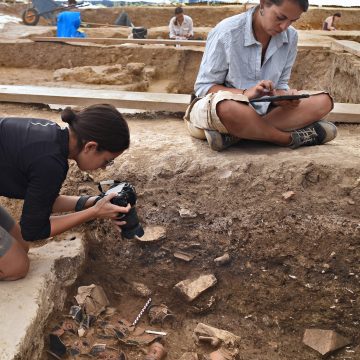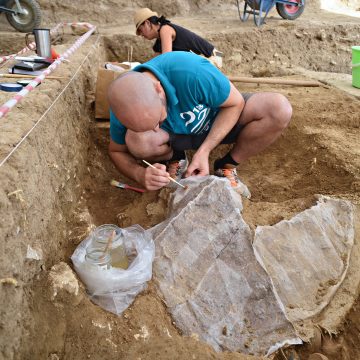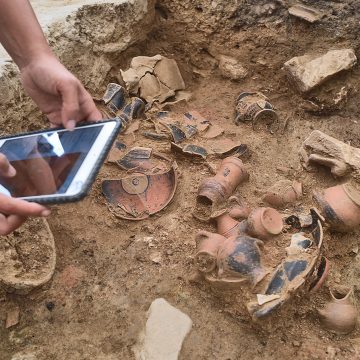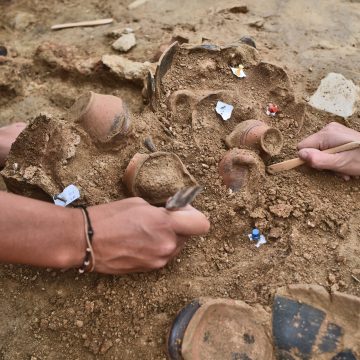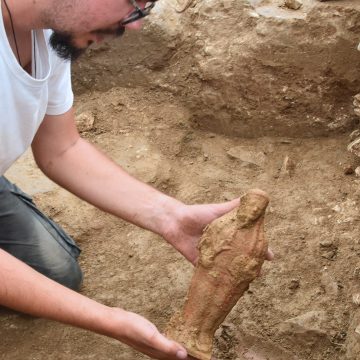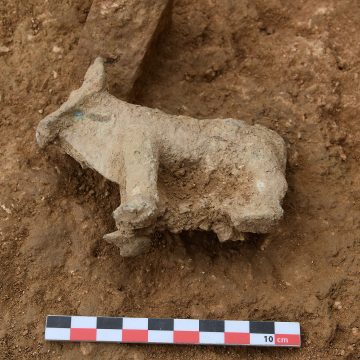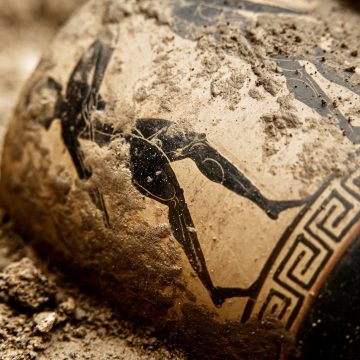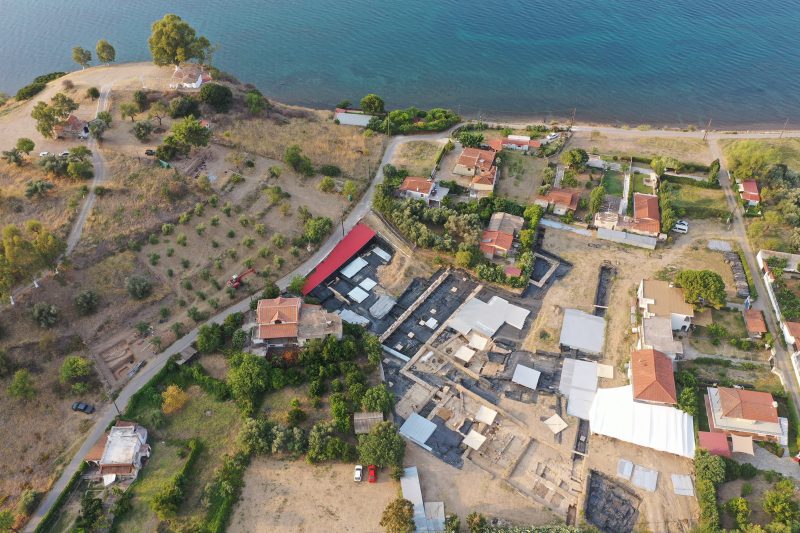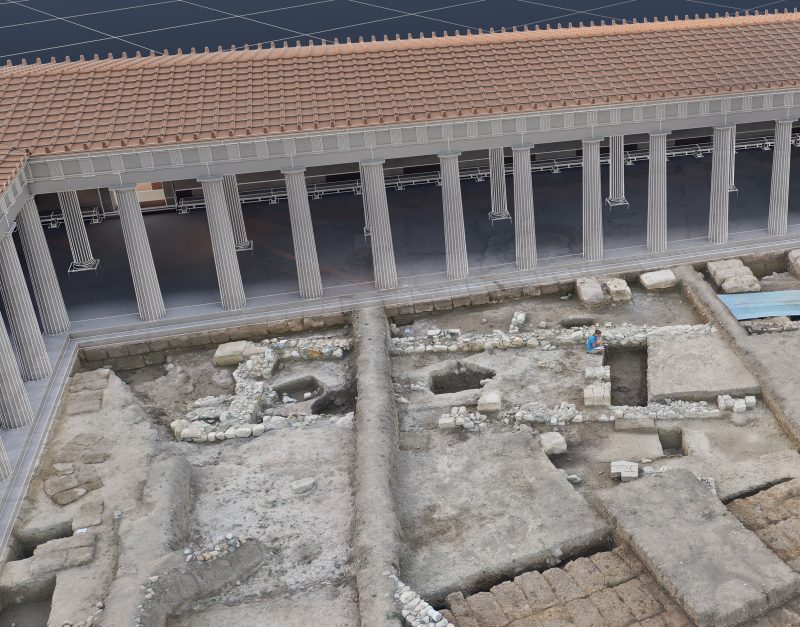Spectacular discoveries in the temple of Artemis at Amarynthos
The excavation season at the sanctuary of Artemis Amarynthos, located in the territory of ancient Eretria, is coming to an end. Extraordinary discoveries were made during the six weeks of fieldwork by archaeologists of the Swiss School of Archaeology in Greece (ESAG) and the Ephorate of Antiquities in Euboea. They brought to light the existence of two successive temples and a rich deposit of offerings.
Swiss archaeologists and their Greek colleagues have been excavating the sanctuary of the goddess Artemis Amarysia in Amarynthos, an ancient town in the territory of Eretria on the island of Euboea, for the past fifteen years. The excavations are under the co-direction of Professor Sylvian Fachard (ESAG – University of Lausanne) and the Ephor of Antiquities of Euboea, Dr. Angeliki Simosi. The exact location of the Artemision, one of the most important places of worship of the Euboeans, has eluded archaeologists for over a century. Archaeologists have uncovered a temple that was in use and rebuilt for several centuries. The first temple, built around 650 BC, was destroyed at the end of the 6th century. A second, more monumental temple was rebuilt shortly after, around 500 BC. Rich offerings were deposited on this occasion; the excavations brought to light over 600 objects, including ceramic and bronze vessels, painted terracotta figurines, gold jewelry, silver, faience, glass and semi-precious stones, orientalizing seals in the shape of scarabs, as well as weapons (including a helmet and a shield).
Fifty centuries of occupation
Remains in the sanctuary attest to the site’s deep history. The earliest structure date back to 3000 BC. Sanctuaries are sacred spaces usually consisting of an altar, a temple –the house of the deity– and annex buildings, delimited by an enclosure. The sanctuary of Artemis Amarysia is no exception to the rule. In addition to the monumental portico excavated in recent years, two altars related to the successive temples have been uncovered. Animal sacrifices took place on the altar, as selected parts were burnt to ashes as an offering to the goddess. Such rituals performed at Amarynthos by the Eretrians were meant to attract the goodwill of Artemis.
Artemis Amarysia in ancient sources
Several ancient sources mention the sanctuary of Artemis Amarysia. The main public documents (decrees, treaties), engraved on steles, were displayed there. The festival Artemisia was celebrated every spring by the Eretrians to honor the goddess. On this occasion, a grand procession of 3,000 armed warriors, 600 horsemen, and 60 chariots made the 12 kilometers journey to the sanctuary. The festival attracted citizens of the cities of Euboea, but also representatives of other Greek cities.
State-of-the-art excavations
The most significant ancient Greek sanctuaries were mainly excavated during the 19th and early-20th centuries. Therefore, the discovery of the sanctuary of Artemis Amarysia constitutes a rare opportunity to excavate a shrine using modern, cutting-edge technology and methodology. It also offers a unique case study for understanding the development of sanctuaries at the dawn of Classical Greece. The research campaigns, financed by the Swiss National Science Foundation (SNSF), the State Secretariat for Education, Research and Innovation (SERI) as well as private funds, allow for the collection of new data which, combined with the knowledge acquired over the last few decades, offer a rare opportunity to study the making of a sacred landscape in ancient Greece.
Press release of the Greek Ministry of Culture and Sports RTS News report (12/08/2021)
Contact
Sylvian Fachard
Professor of Classical Archaeology
Director of the Swiss School of Archaeology in Greece (ESAG)
Institut of Archaeology and Classics (IASA)
University of Lausanne
Switzerland
+41 079 342 45 86
sylvian.fachard@unil.ch
